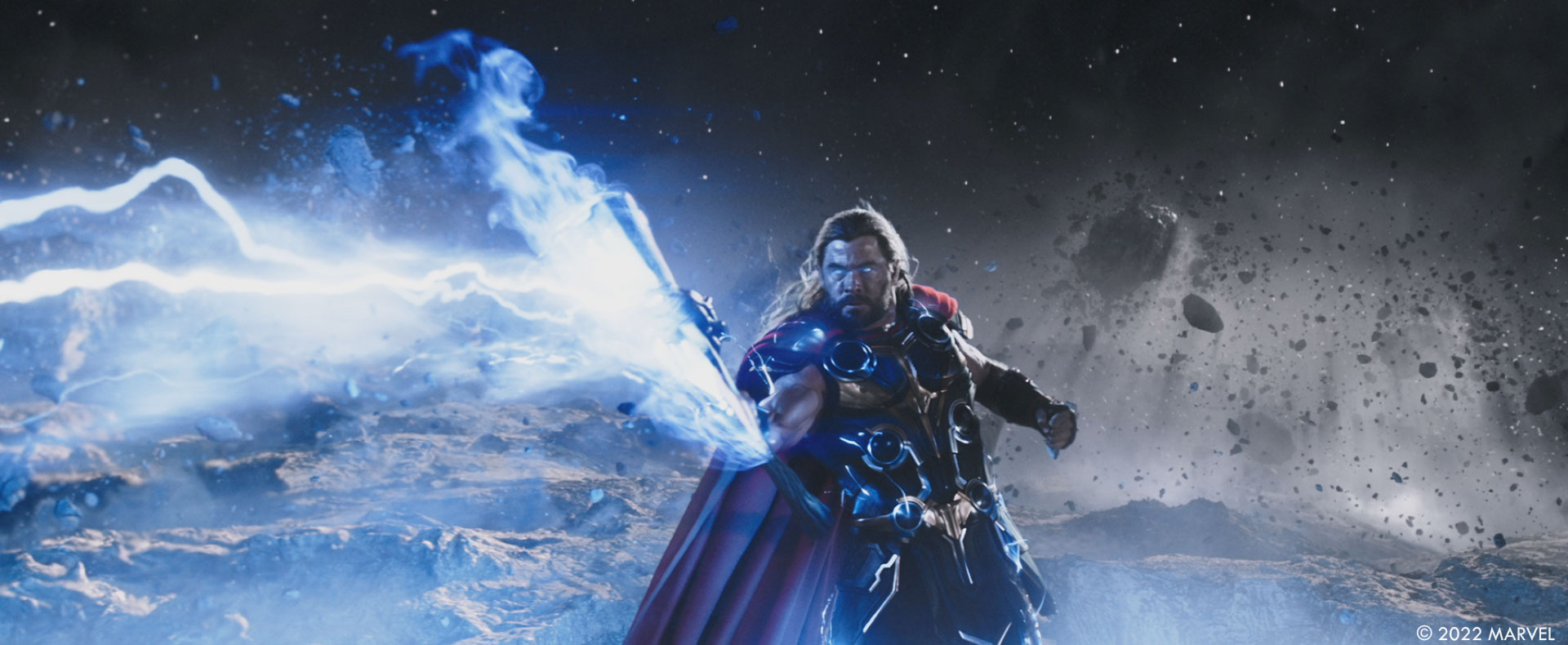Back in 2017, Jake Morrison explained the visual effects work on Thor: Ragnarok. He then worked on Jungle Cruise. He’s back today to talk about Thor: Love and Thunder.
What was your feeling to be back in the Thor universe and with Director Taika Waititi?
The Thor universe is a deceptively calm place at the beginning of a project, you know the characters, you know the universe. Or you think you do. And then it all gets turned upside down.
Taika’s a creative force of nature and wonderfully restless so you can be entirely sure he’s not going to sit still and make a copy of Ragnarok.
What are the main changes that he wanted to do after Thor: Ragnarok?
If Ragnarok was ‘cut the character down physically but prove he’s got the gumption to succeed’ then Love & Thunder is the opposite – Thor’s superpowers are never in doubt, but his character is.
From a visual storytelling point of view, that changes the way you approach how the VFX are done. The subtleties are always cool to watch as you’re putting a movie together – something as simple as the number of frames it takes for a character’s power to rekindle makes all the difference. I’m always drawn to learn from the audio crew, they come in much later but if we work together – even taking the nudges from temp fx added for test screenings – the whole film draws itself together better!
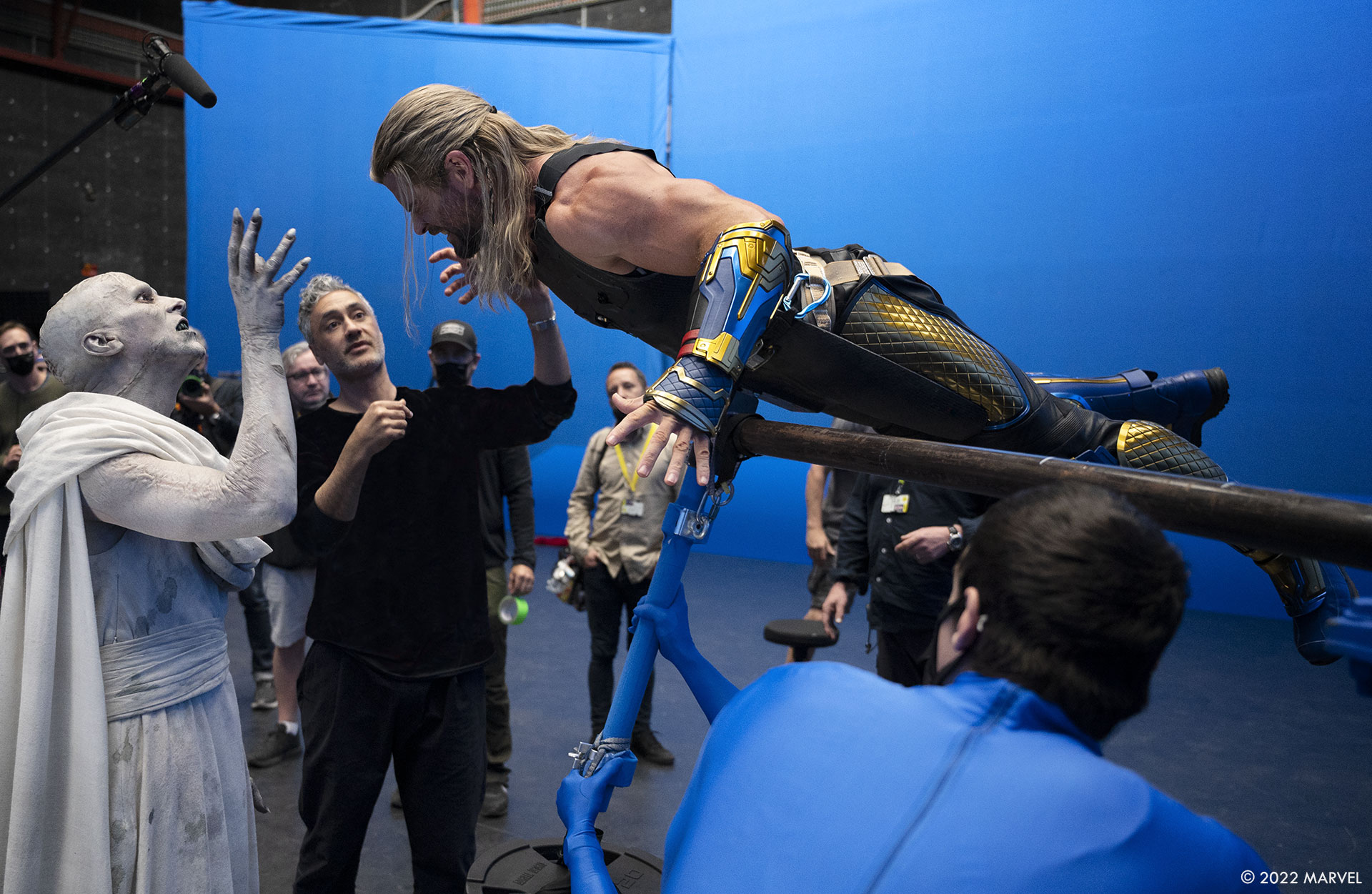
How did you organize the work with your VFX Producer?
This is the single most important relationship on the movie! Lisa Marra and I worked as a team to relentlessly try to push Taika’s vision out of the land of ideas into the world of actual Visual Effects that you can see in the movie. The demands on the VFX Supervisor and Producer team are extraordinary. In a ’normal’ film it’s intense, but with a rollercoaster like Thor: Love and Thunder you have to be in lockstep and make sure that the Director, Studio and the VFX Vendors all feel that they are receiving the love they need.
25 VFX Vendors. Around the globe. We’re chasing the sun – starting the day in Europe, finishing the day in Australasia. Owing to late-date additional photography and global supply issues we even ended up with a scene where we rebuilt the set 3 times over multiple rounds of additional photography and literally 10 vendors were involved in finishing the shots, often back to back. If you and your Producer don’t have each other’s back, it simply wouldn’t be possible!
How did you choose the various vendors?
In many ways, this is the single biggest structural challenge that you have with post-production on a movie of this size. Casting the right vendor for the right scene is immensely important – each VFX company has a lean towards a particular type of work, character animation, environments, fx, and it’s crucial to make sure the right work ends up at the right place. An immensely challenging task especially given that you’re often awarding the work and signing contracts with the larger vendors before you’ve even rolled a single frame of footage!
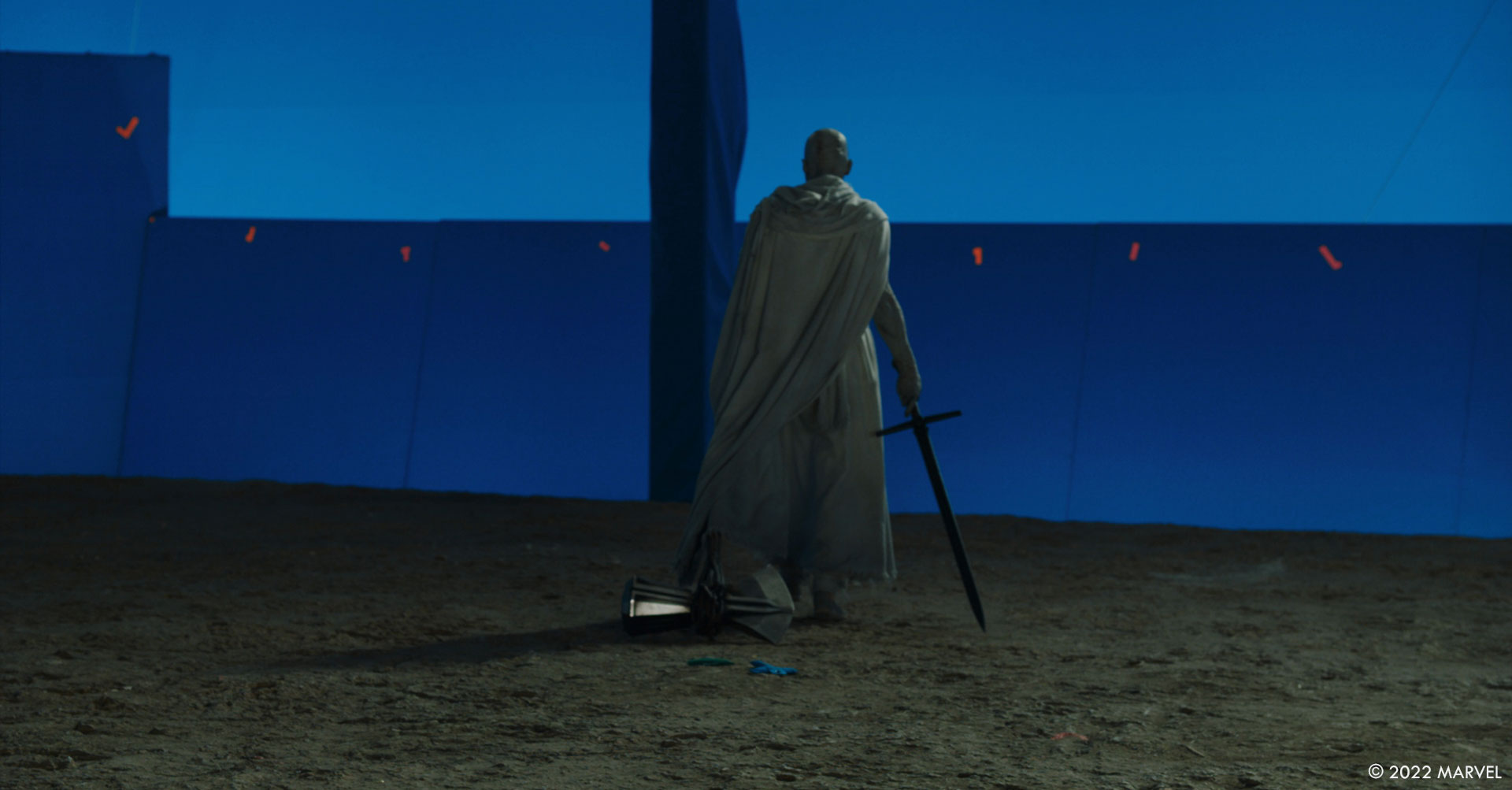
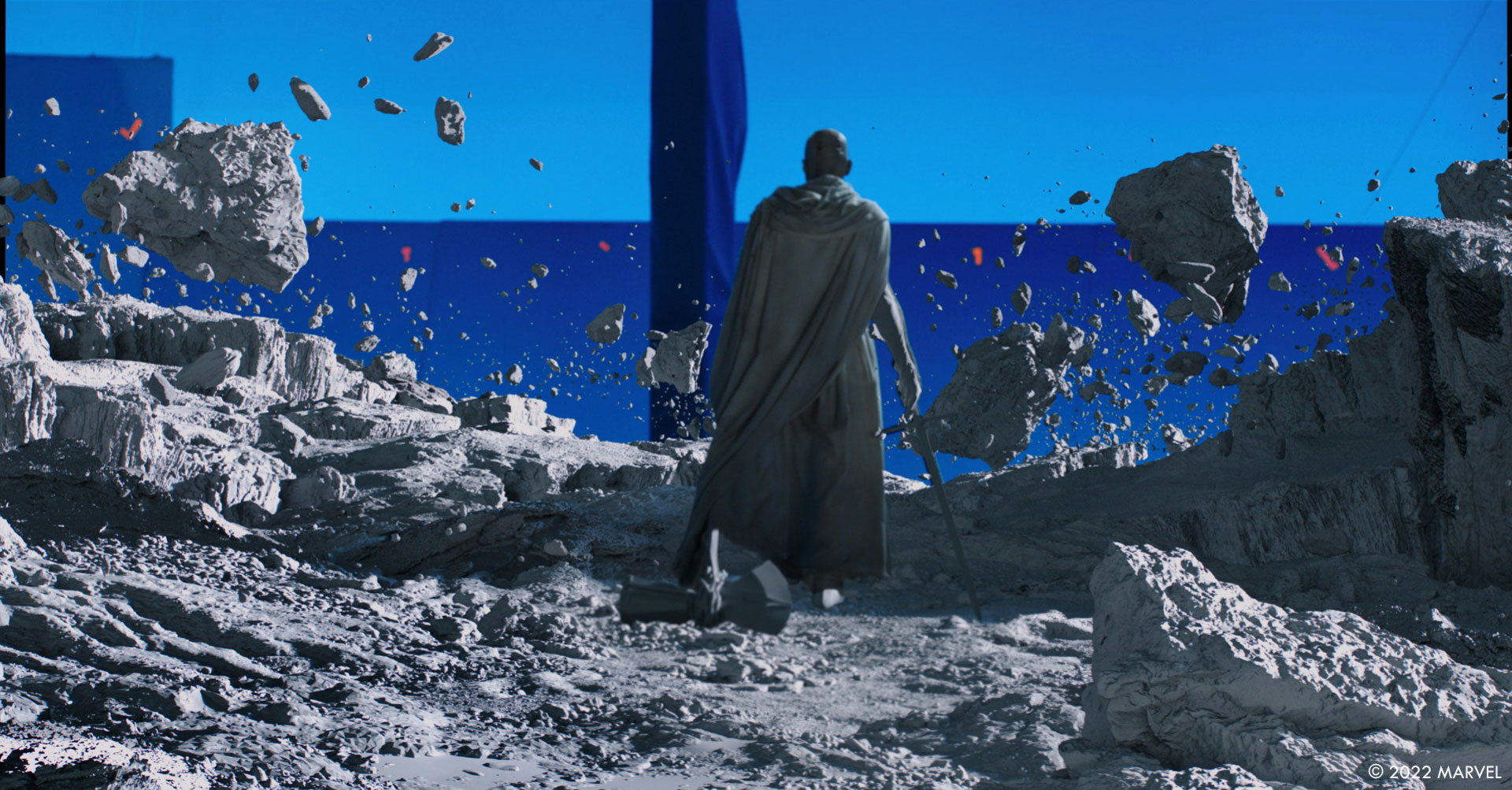
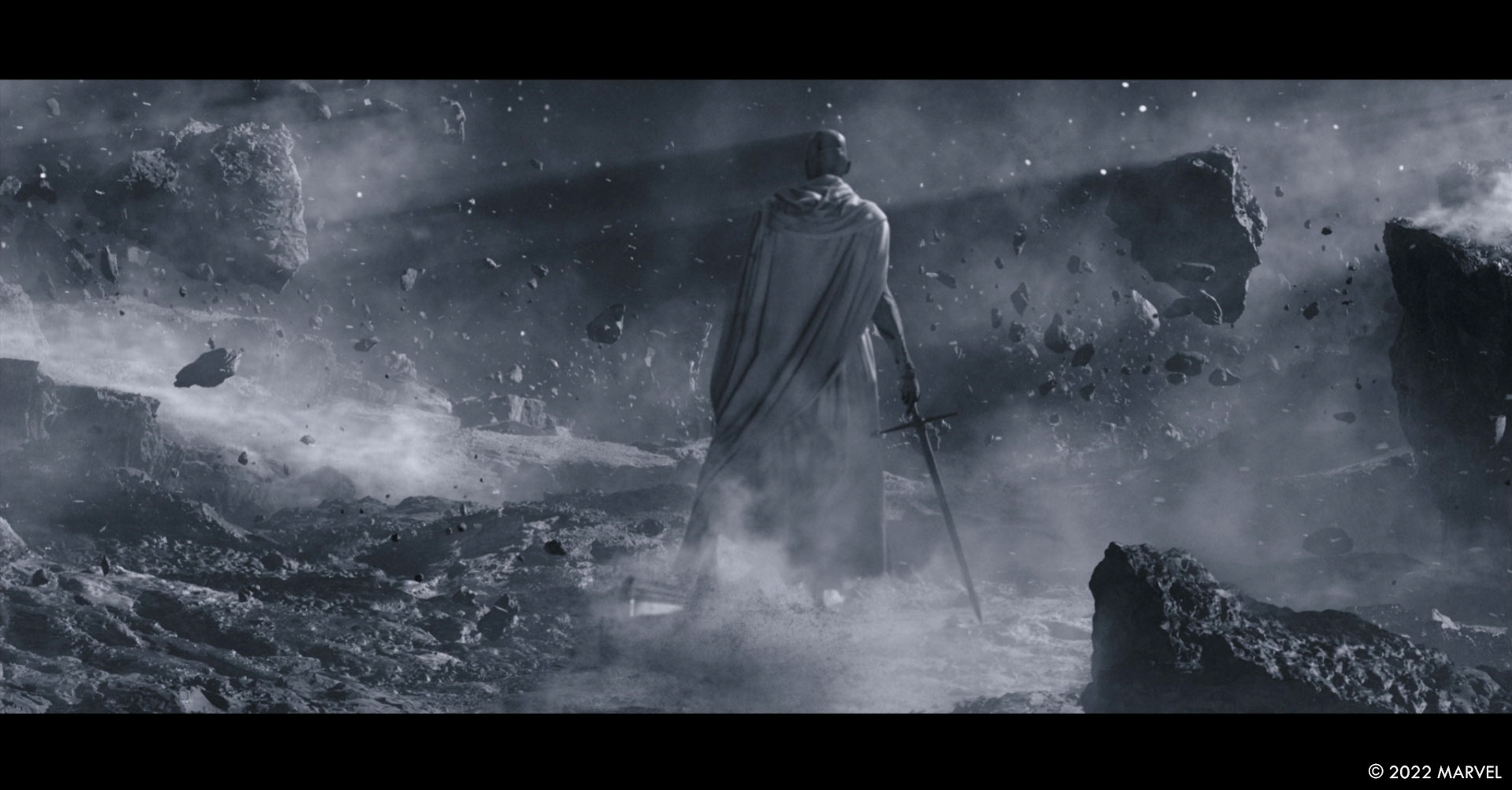
How was the collaboration with their VFX Supervisors?
Amazing. Many people have asked me if covid was a barrier to the type of closeness that they imagine we had before but the truth is that in the ‘old days’ we were all sitting in a dark screening room with a string of VFX Companies coming on the speaker phone and a shared, sketchable, screen for us to discuss the shots. The new tools that came out of the Lockdown were nothing short of revelatory. I could engage the supes directly, with eye contact, and their teams. The connection that the new Zoom tools gave us in post were a game changer for me and I would hope the teams felt much more connected to the creative process.
The moment when we said goodbye and thank you to the teams at Method Vancouver & Montreal really stands out. We had 250-300 artists on the zoom and it was a truly emotional experience. There may have been tears. The amount of effort that these artists, and all of the artists on the show, had relentlessly pushed into this insane Space Viking movie just humbles you. Thanks to any of you that are reading this. So much love and thanks.
How did you work with the art department to create the various creatures and environments?
With Marvel the process is a little different to most studios. The environments go to the Art Department, but the creatures and hero characters are often handled by the Visual Development team – VizDev for short. However, in our case the brief given to myself and Lisa by Taika and the Studio was ’NO COPY AND PASTE!’
Taika has, for years had a secret loathing for CG Crowd work where you effectively see the same creature (with slight differences) cloned a thousand times and this was the film where he decided he was going to make that point! There is, of course, a reason why CG Crowd work trends towards a similar per character look – sports events, zombies etc are all based around the same bipedal structure. And, you know, clothes. Things like that.
For this movie we dutifully started working on a completely procedural crowd system with multiple vendors where we could literally take an evolutionary base, like tentacles or lobster claws, and then iterate on top of that with infinite variety. A huge amount of ‘hero’ creatures were sketched, digitally created, and then cut into many many pieces that enabled the AI-powered systems to start to create thousands of hellish hybrid versions of the Shadow Creatures. Of course, we retained high-level control for any of the creatures that were going to be strongly featured and used that prerogative a lot!
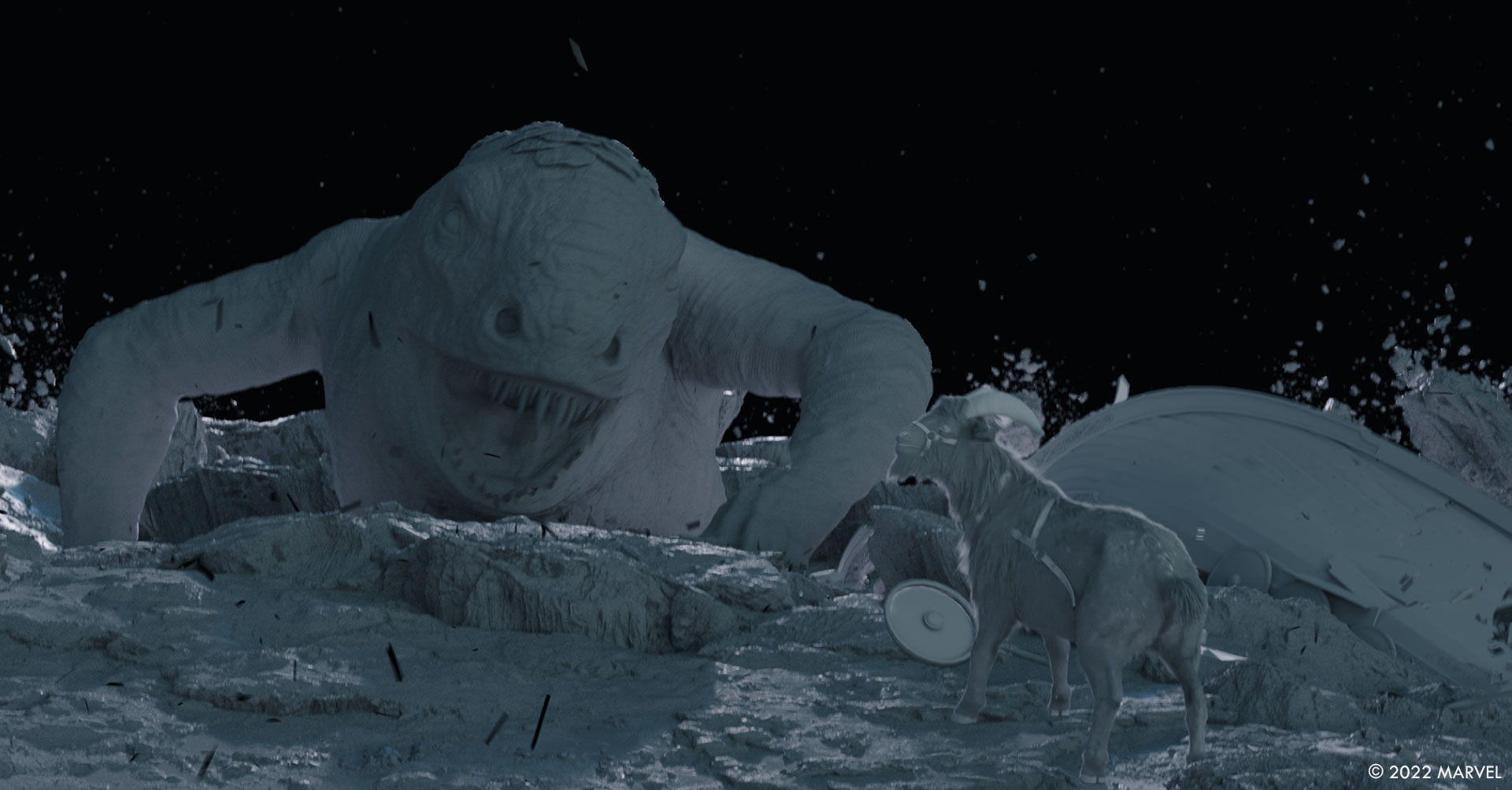
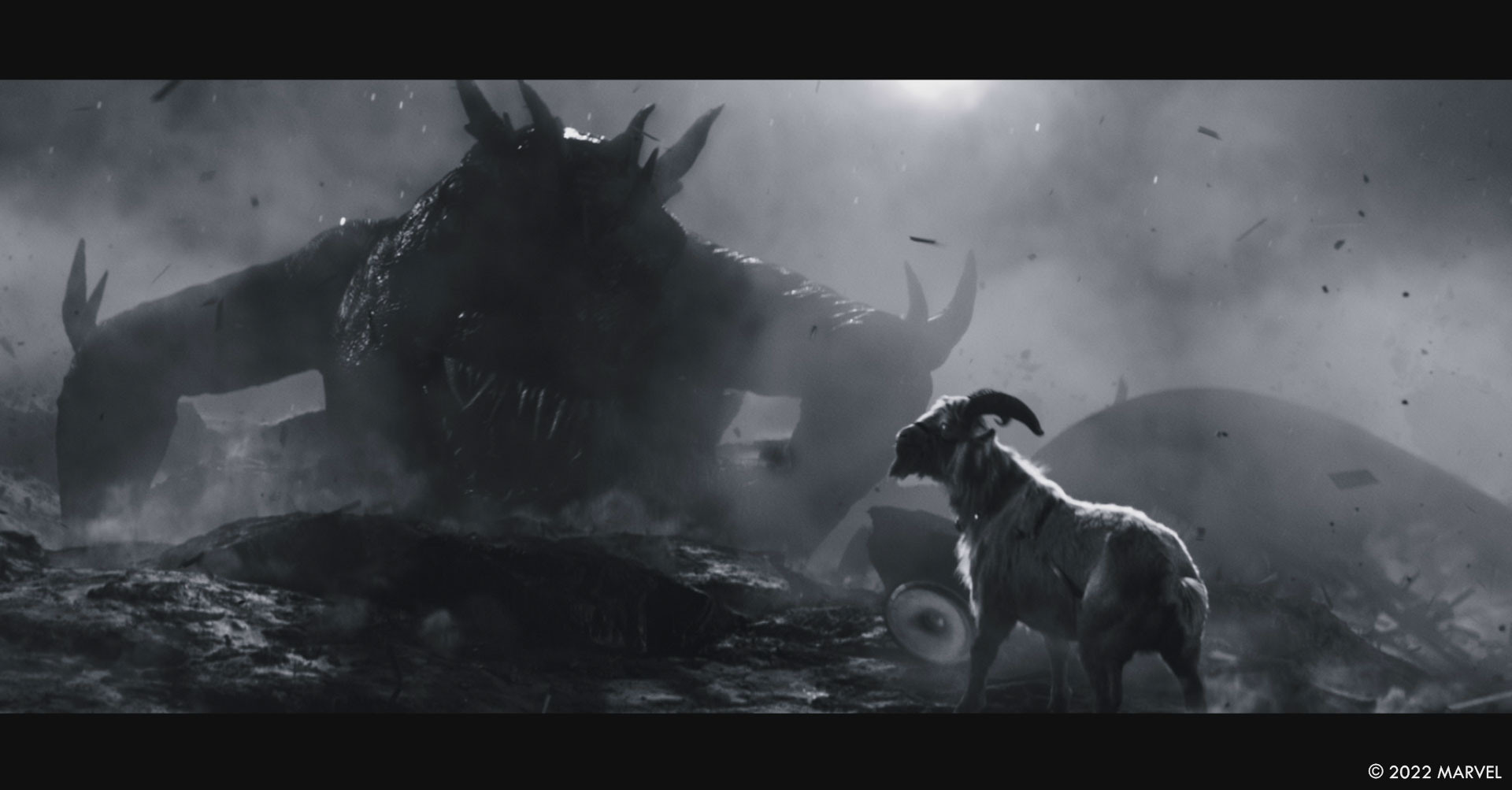
What kind of references and influences did you received for the creatures animations?
The creative ethic to the Shadow Creatures is something that would likely not be obvious to an audience but nonetheless pulls the whole thing together – each creature is created by a shadow cast from a real world object, often many of them stacked up, and the ultimate ‘profile’ of the creature’s powers and physique is 100% based on the core object that did the shadow-casting! In simple terms, a spikey plant will get you a creature with more evil pointy claws but a fern or willow might lean towards a more tentacled creature. Truly one of the most complicated and unsung pieces of VFX in the whole movie!
There is a beautiful fight sequence with no colors. How did you handle this aspect?
Incredibly challenging! There’s actually a lot more to this sequence than meets the eye, including some ground-breaking work integrating the lighting, camera and VFX together in a way that ’s never been done before.
We deliberately moved beyond what the coolest visuals in Ragnarok – the Valkyrie Flashback sequence – and came up with a truly astonishing way of shooting the Moon of Shame sequence.
To start with, Taika was looking for ultimate control in post for this sequence. Whist the sequence looks like there are wheeling lights spinning around behind the actors, on the day there were just 6 different (huge) static banks of light. It looked like the most vanilla shoot possible. But from a technical point of view, we were doing something that hadn’t been done before – shooting 6 different lighting setups simultaneously. Literally.
The raw footage is insane – it’s one-two-three-four-five-six lighting setups cycling continuously at an incredibly high frame rate. Then the camera shuts off for 1/24th of a second and the whole process starts again.
Taika and I have always been skeptical about dynamic on-set lighting being exactly right for the one perfect piece you decide to keep in the edit – from yelling ‘action’ to ‘cut’ there’s a world of experience and not every moment needs to be on the screen. Being able to completely ensure that the movement of the light (and the subsequent deep shadows created from the environmental debris) was exactly right for the action as dictated by the flow of the edit was revelation.
To get something as complex through the production pipeline required all of the departments to come together and collaborate. Our DP had to trust us that the finished imagery was going to far exceed the look on-set (without the benefit of 1000fps+ eyeballs the effect was at best underwhelming!), our Gaffer had to comb the planet to find every last version of a particular type of light that we needed to sync with these ultra-fast custom cameras. I genuinely remember the day where Reggie came up to me, proud as punch, and told me that he’d located the last two of these lights available anywhere in the world. 2 of them. In Iceland.
Once we’d shot the sequence the work really began. Given that you have 5 different dynamic lightning angles with your actors, as well as a ‘registration pass’ to allow for Optical Flow realignment of the lightning passes for blending, you now have the opportunity to do the most dynamic version of the scene that could be possible – wheeling lights, all at custom speeds, and most particularly, customized to the exact performance and dynamic required in a shot.
In most films – certainly all of the Thor films – we’re regularly required to create interactive ‘fight lighting’. Someone throws a lightning bolt at someone else and, on screen, we need to show the influence of that. One of the most extraordinary spin-off benefits of this lighting system was the fact that instead of having to create a CG version of the actor to ‘catch light’ – often a tortuous process for the artists involved as you need to make as close-as-possible version of the live action so the lighting registration is correct – including clothing simulations! The new tech actually let us just reach into the lighting ‘bag’ and pull out the lighting pass that was shot from that angle, recolour and blend it in. No cheating here – it’s truly the actors getting hit with those effects lighting, we’re just choosing when to being them in and how – ground breaking stuff and very freeing!
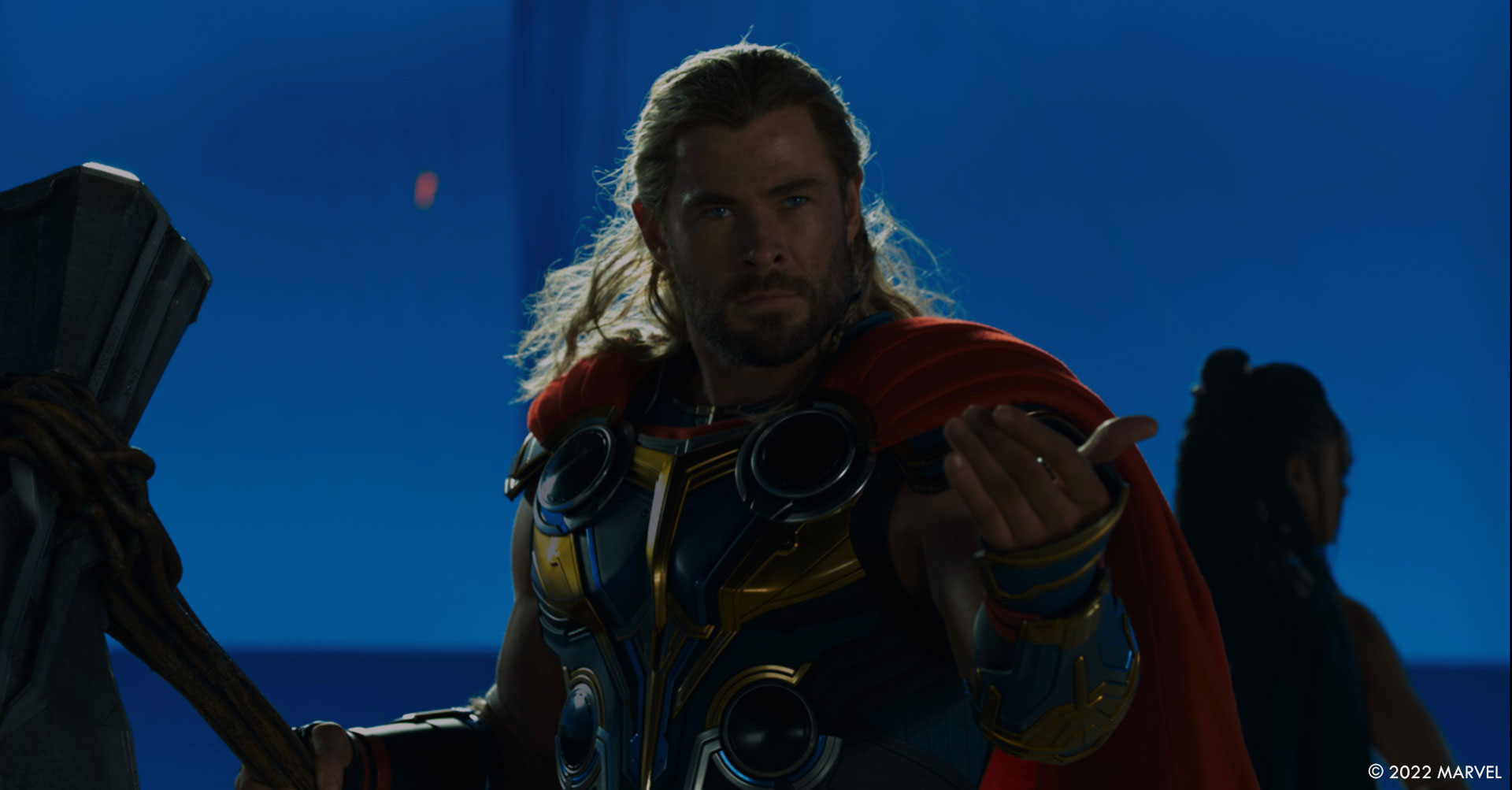
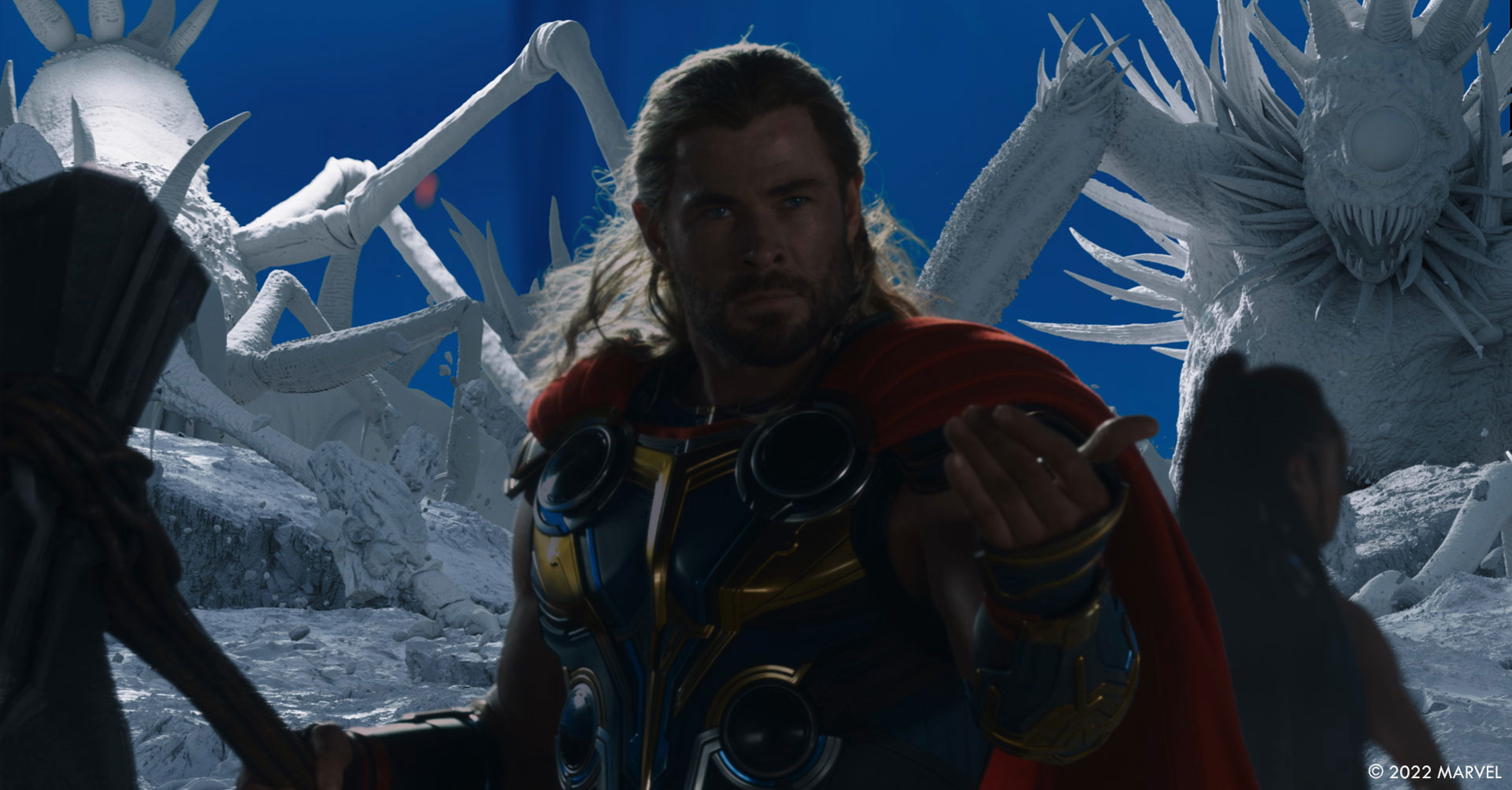
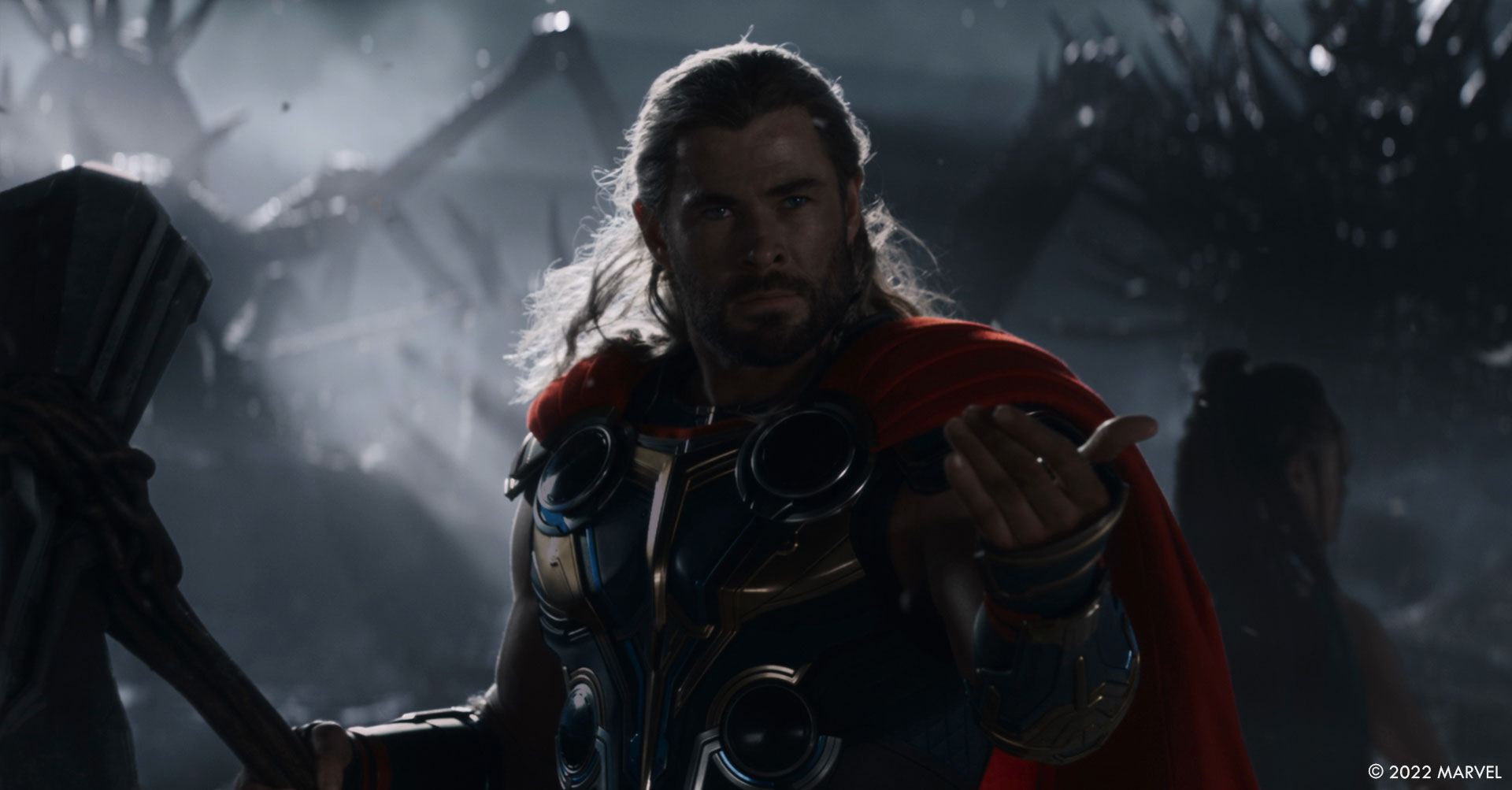
Can you elaborates about the environments creation?
We had so many environments that it’s hard to know where to start. So many extra-galactic places were created for the film, and sometimes just for 8 shots! Omnipotence City? We could easily have set a full episodic drama there, but by the time we understood what the movie needed it was a quick establisher, and then a deep dive into the Golden Temple. Who are we to argue with what the movie needs, but I would love to give a huge shout out to the immense amount of environmental artists that contributed just so many places for the audience to visit during the course of the movie – landscapes, cities, waterfalls, crowds that were normal crowds, crowds that all – specifically! – had to be difference from each other. And once again, the core request, to make sure that each and every location be different form the last one! An epic undertaking.
Can you tell us more about the use of the StageCraft?
StageCraft is ILM’s proprietary ‘live set’ creation system for the volume. We knew from the beginning that we would end up replacing all of the environments that we put on the LED walls – the demands of a Thor universe are just too dynamic to do within current hardware playback limitations but, of course, there will be soon and it was an exciting learning experience. Even knowing that the environments would be replaced didn’t mean there was wasted work. We did multiple sessions with Taika where he signed off on the look and design of the different environments during screenshare sessions followed by deeply immersive VR sessions where we could ’tour’ the sets, make changes, even shoot shots! Finally the environments were shown to us on the big (big!) LED screens and we saw the fruits of the labour.
But the work didn’t stop there, even after shooting, all of the assets that ILM had created are bottled up and sent to each VFX Vendor that was working with a sequence that used the LED Volume. This gave all the vendors a huge advantage to creating the environments – we knew roughly what the world was, we’d lit the actors with this deeply interactive light, so it was a huge advantage to be able to make sure that the same lighting setups that were used to light them were extended out into the deep distance to create convincing – and weird! – environments. To explain the ‘weird’, Taika’s brief for the first planet we visit – Indigarr – was that it should look and feel like a ‘Venice Beach’ chunk of spray can art.
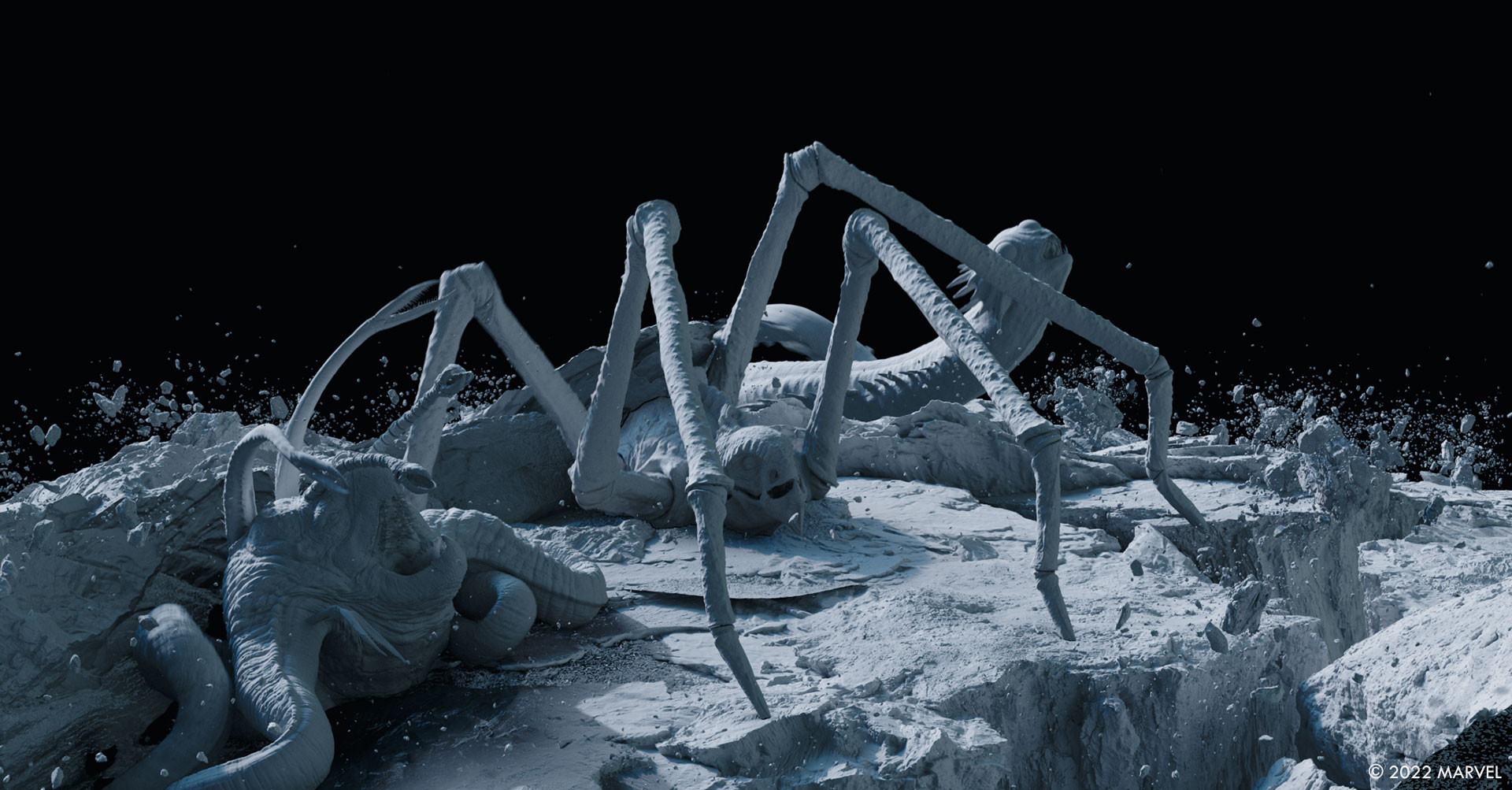
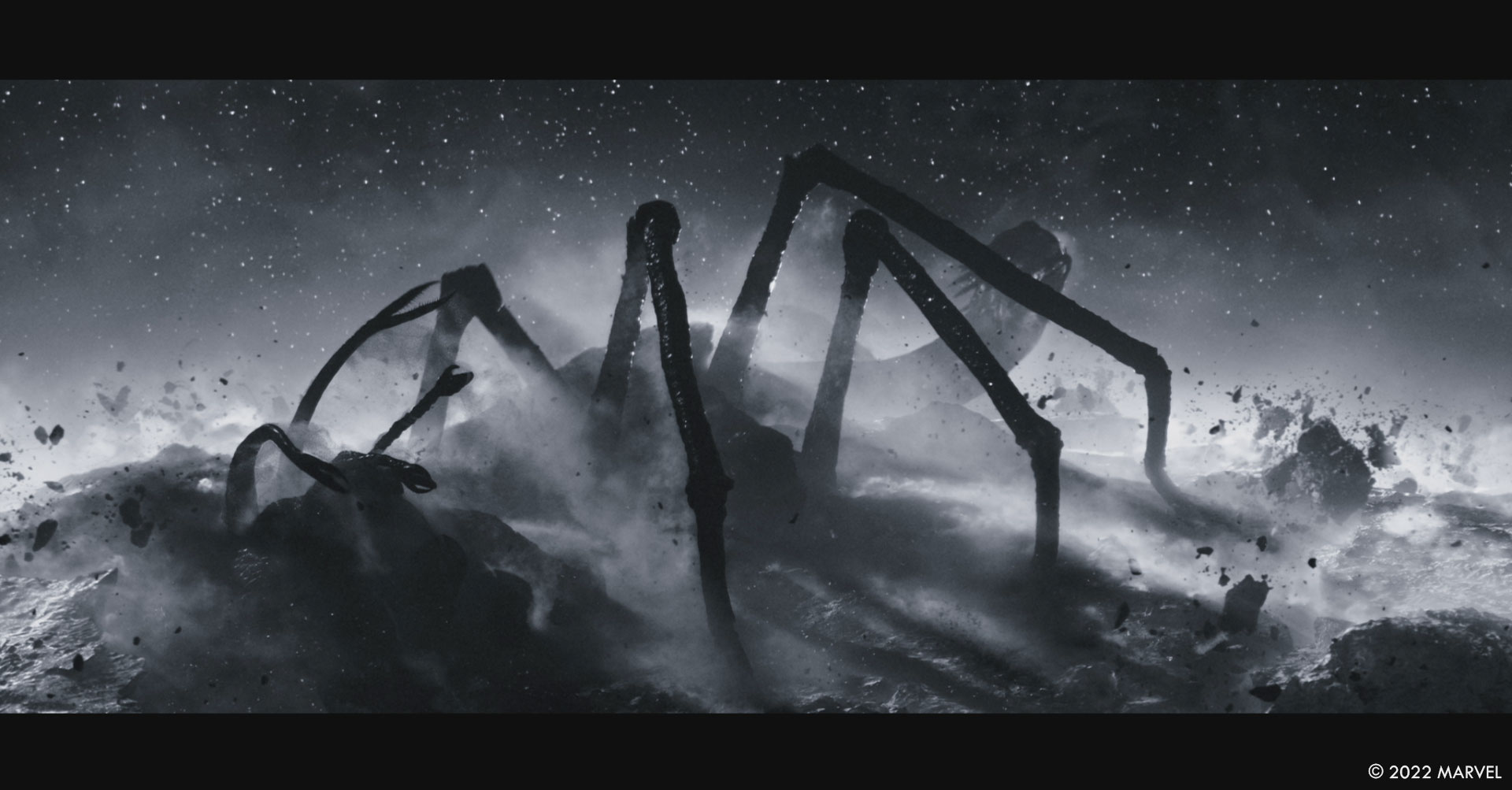
Which location was the most complicate to create and why?
During Physical Production? New Asgard! It was an amazing set to build. We knew we were going to spend plenty of time there – both day and night – and wanted to make sure that the resources were all put on screen. This meant for the first time in my experience, leaning on VR to help work out the build. From the beginning of VFX there’s always been a moment for each set where the senior crew stand around a ‘foam core’ model of the proposed set, or even just blueprints, and we all discuss what needs to get built. The Production Designer will always want to build everything. The Line Producer will always want to lean on VFX as much as possible, and this is a sensible move – the phrase ‘if you touch it, you build it’ is there for a reason.
The next level move we made on this is one was bringing in multiple VR headsets so myself, Taika, our DP and Production Designer could all inhabit a shared hallucination where, in this case, the town was already built. Once we’d engaged Taika and started to bring in real world ’sun studies’ where we could see exactly that the sun would do at exactly when on the days we were shooting – a dawn shot would need a scaffold bluescreen with a gap in it ‘just here’ to allow the true light to come through, even though the rest of the environment we’d have to capture and replace later.
Given that the LED Volume was the gateway to the VR scouting, I would always suggest that future movies use this technology. The amount of time, resources and creative energy which is focused, rather than expensively dispersed, is amazing.
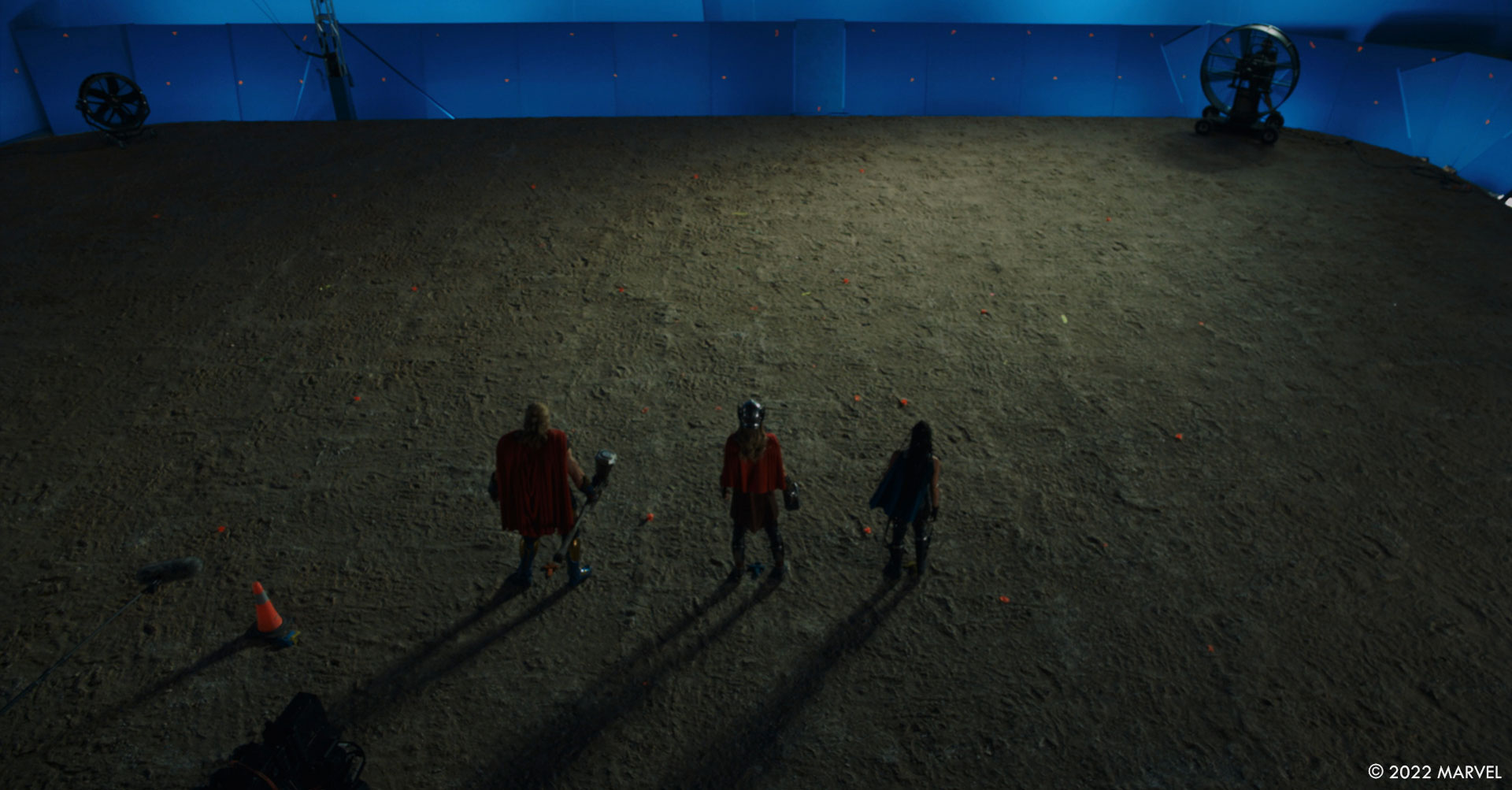
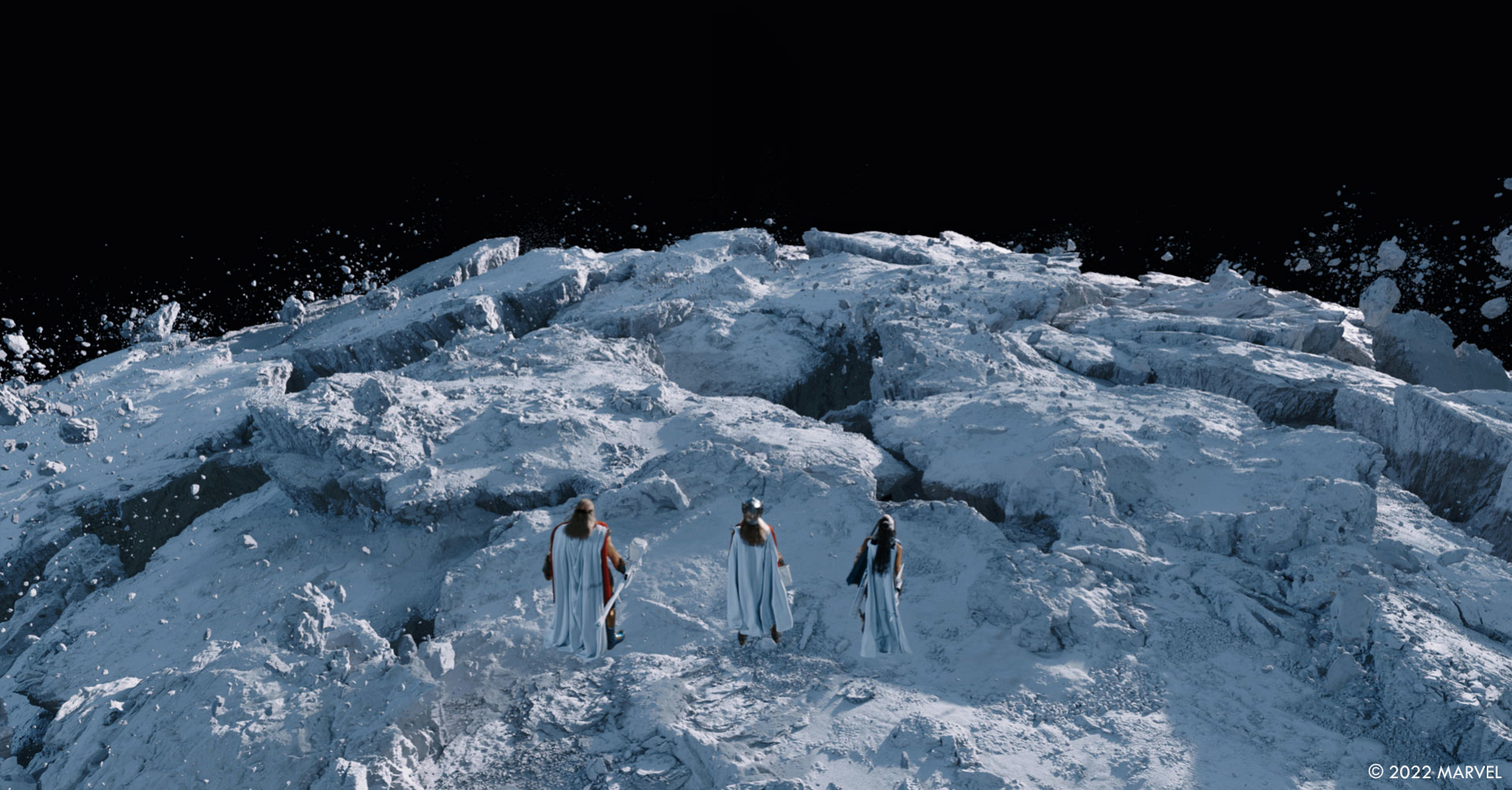
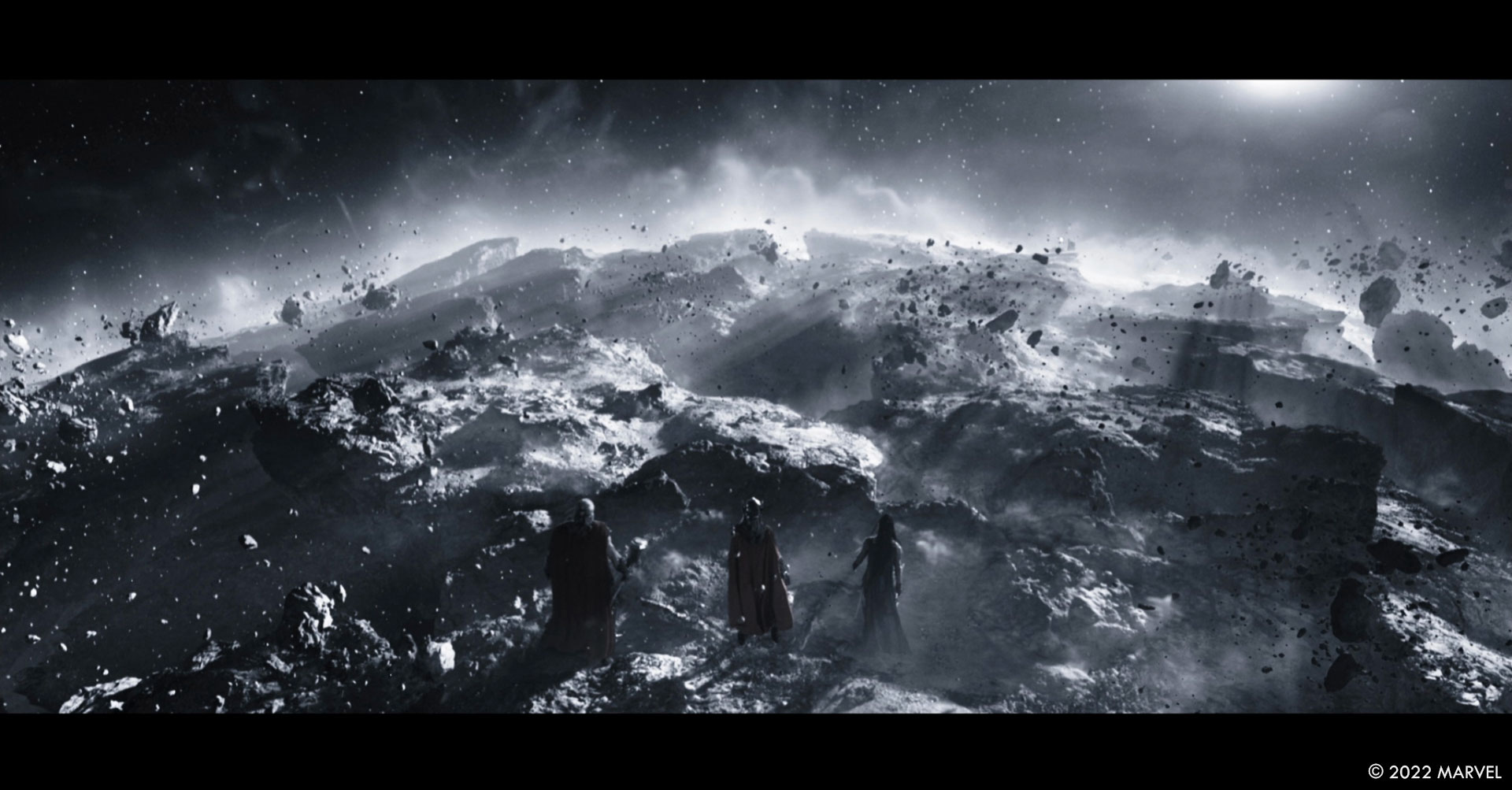
What is your best memory on this show?
From a Professional point of view? I’m split.
The first time I shot the Booskan bikers, as Second Unit Director, in the Volume, with a world-class SFX shaker-rig under a truly epic physical build of the HoverBikes, with the fully kitted-out Owl-based Biker Gang Booskan costumes and the prosthetic headpieces, with the LED Volume pushing past crazy George Miller post-apolocalypic scenes, with lots of lighting ‘chop’. And all while I was playing Motorhead’s ‘Ace Of Spades’ at full volume in the stage? Doesn’t get much better.
However, it’s hard to explain just how scary and exciting the first time that we truly put the Moon of Shame lighting rig together, snaffled every single specialist light on the planet to Sydney, and finally got all of the tech locked together for a Second Unit camera test. It’s scary to jump off a cliff and instead of a parachute someone hands you a silkworm. It’s a true testament to the on-set team and the post-team’s amazing dedication that we got something some incredible for this picture.
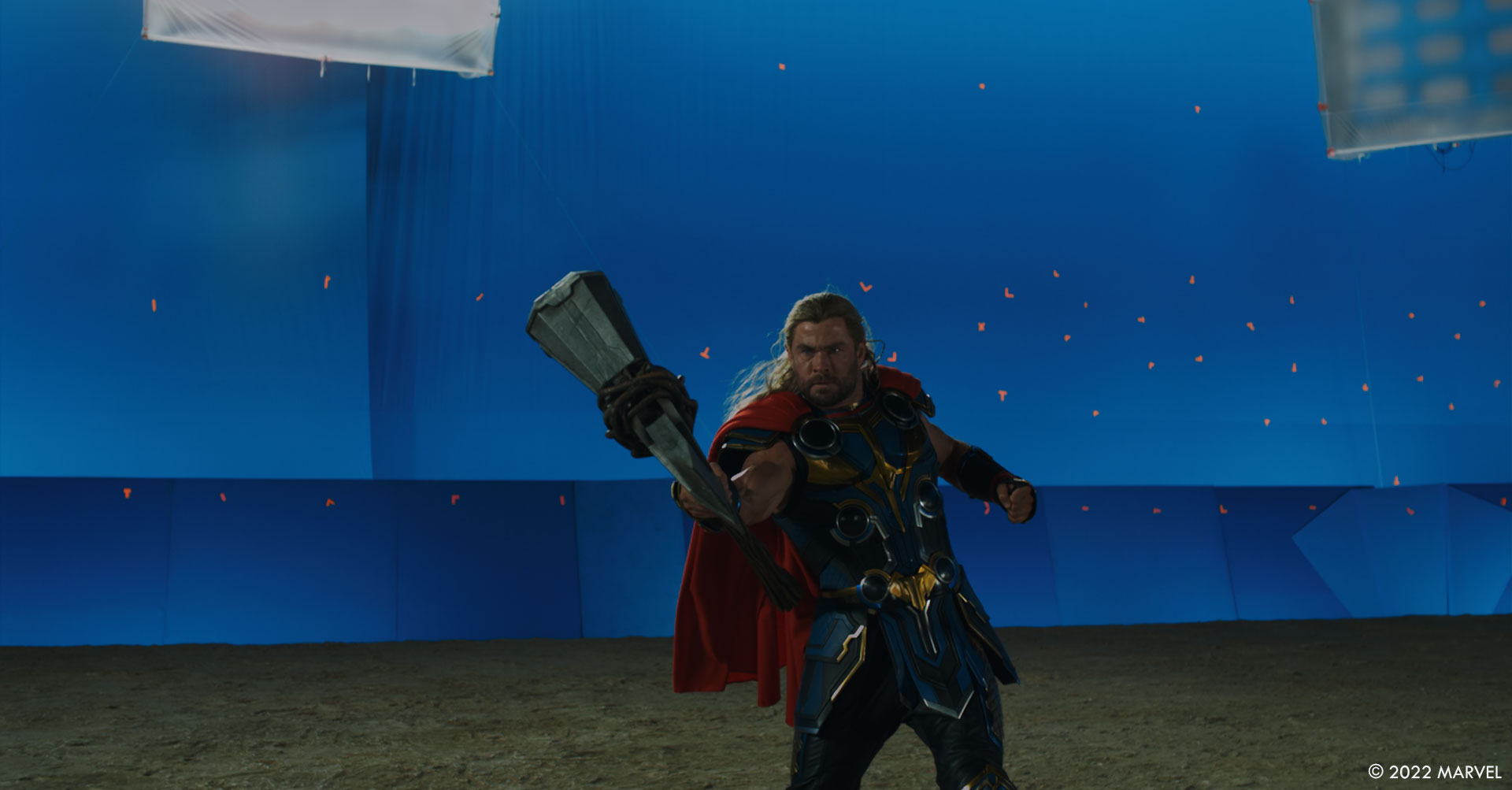
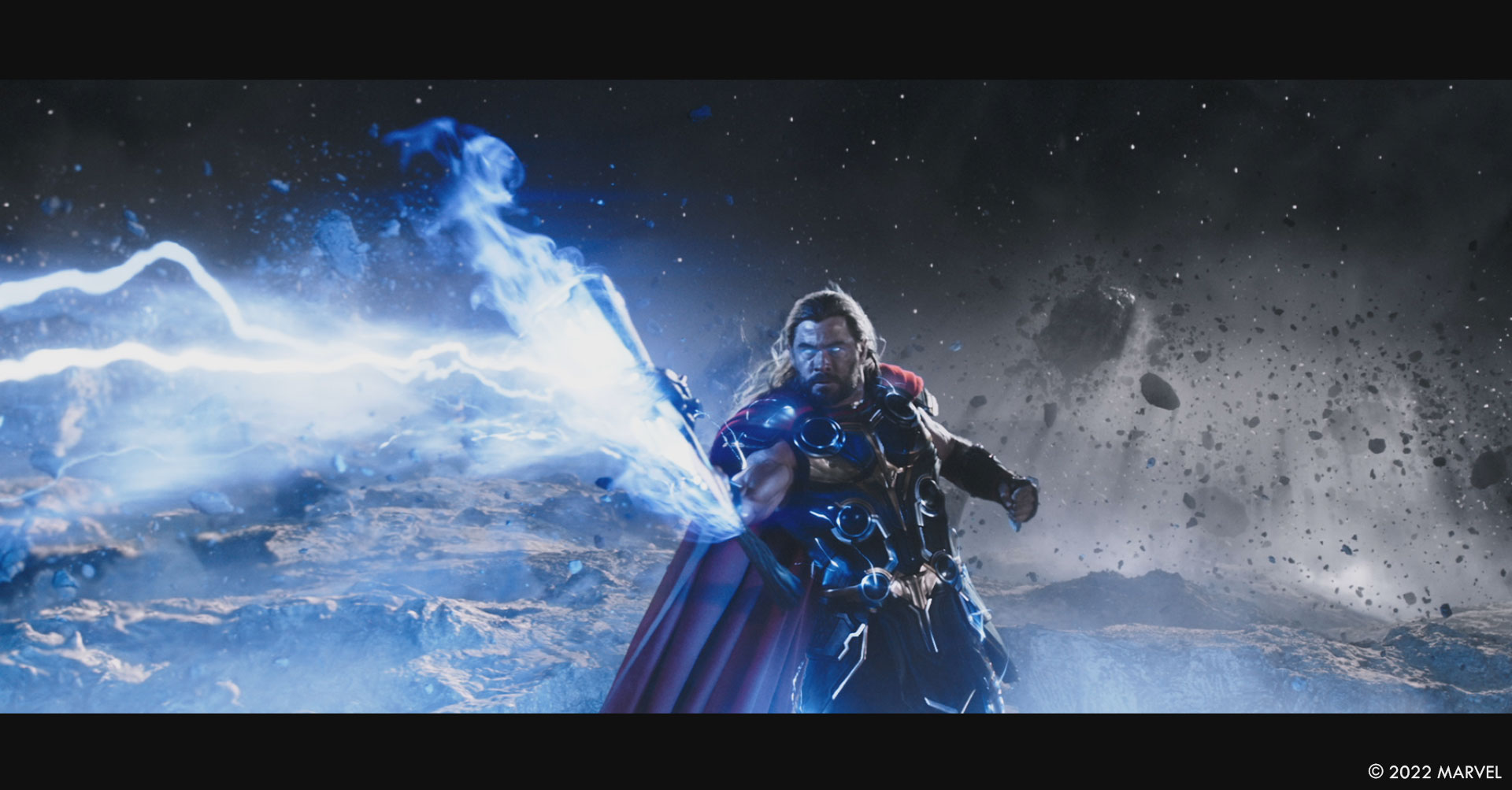
How long have you worked on this show?
Two and half years… My late mother was always fond of pointing out that it should never take longer to make a film than it takes to make an elephant, eighteen months by her reckoning. We have constantly proven her wrong.
What’s the VFX shots count?
Approximately 2,300 shots. Phew.
What is your next project?
Holiday! Going to Europe to see the family! Then… sleep!
A big thanks for your time.
// Jake Morrison talks about the Goats
© Vincent Frei – The Art of VFX – 2022


